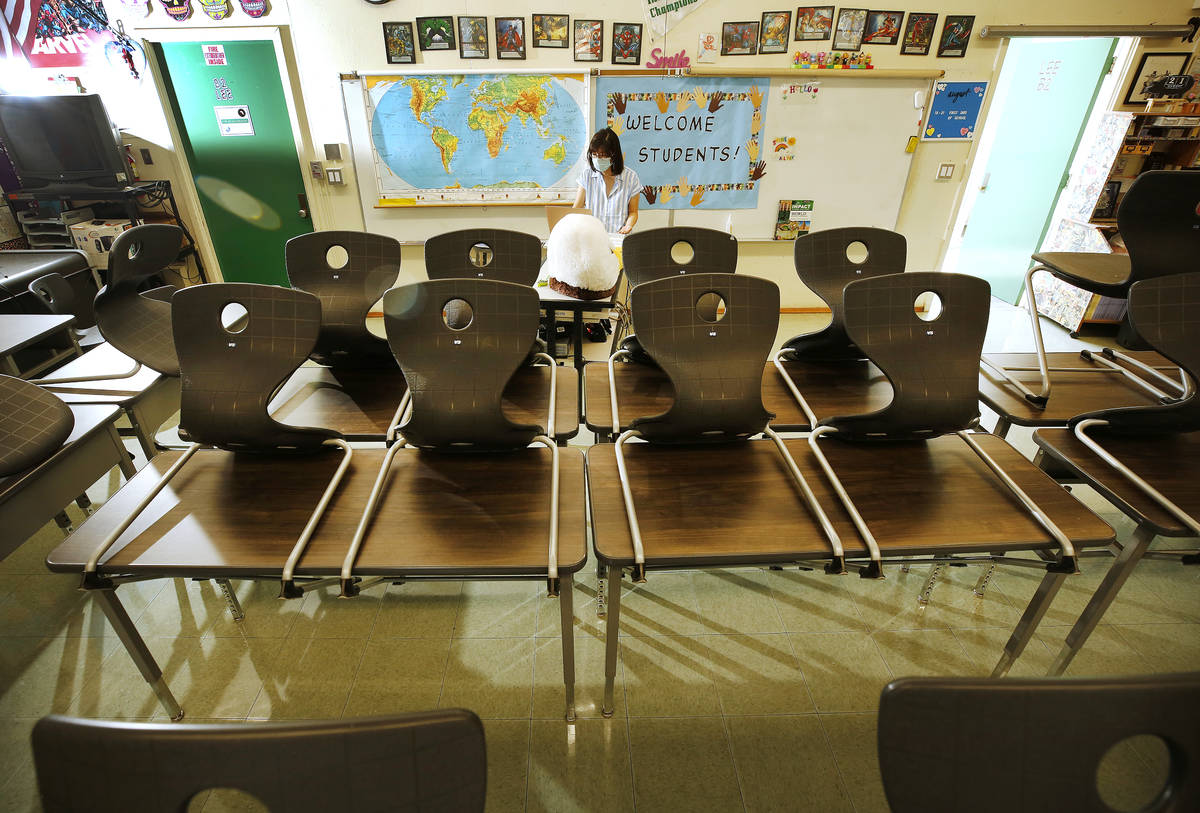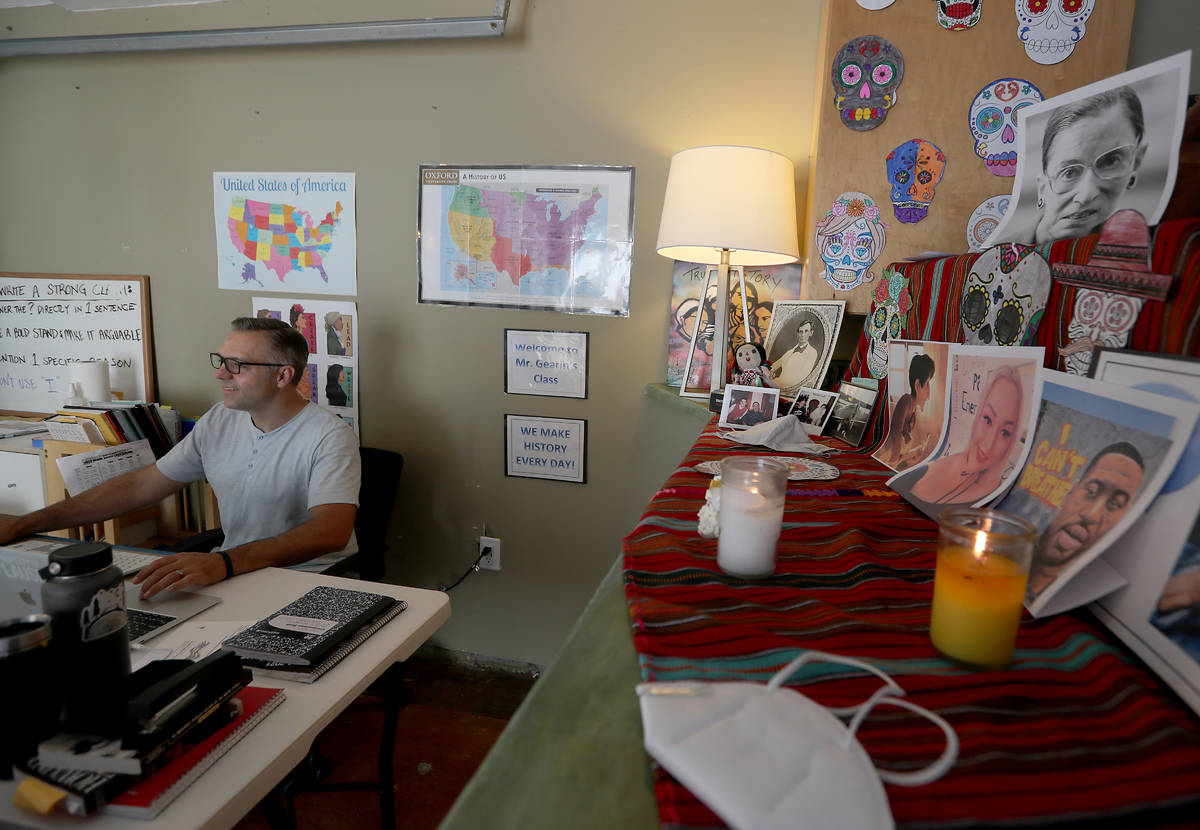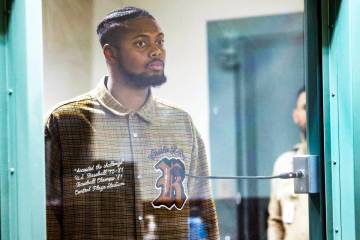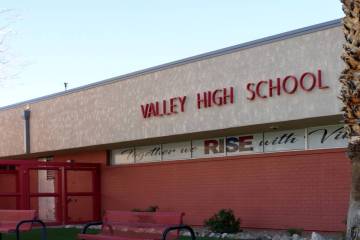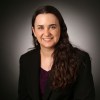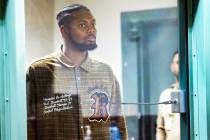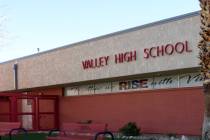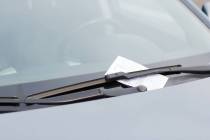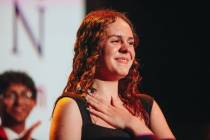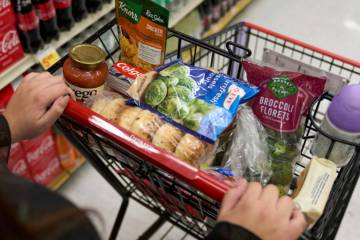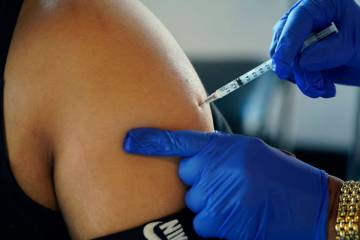Clark County schools stick to distance learning as others experiment
While nearly all of the public schools in the Las Vegas Valley have relied entirely on distance learning since they were closed in March, most of the other nine biggest school systems in the nation have restored at least some in-person instruction.
Seven of the Big 10 have resumed classroom instruction for at least some students, Review-Journal research shows. And some — primarily in Florida — are open to any student whose family decides they would be better served by in-person interaction with an instructor.
The other districts that have stuck with the all-distance approach are the Los Angeles Unified School District and Chicago Public Schools, though the latter plans to let younger students begin returning to the classroom this month.
Something similar may be in store for CCSD, where leaders are fast approaching a tough decision about the possible reopening of valley campuses as the coronavirus continues to rage. Trustees — including three newly elected members — are slated to consider a phased-transition plan in a Jan. 14 meeting and could also set a timetable.
The plan, announced last month by the school district and the teachers union, calls for a staggered return to in-person classes, starting with preschool through third graders.
Most districts still in remote mode
In sticking with distance learning this long, Clark County — the fifth-largest school district in the nation with around 307,000 students — has been in sync with a majority of large school districts in the country, according to the Council of the Great City Schools.
But the tide may be turning, according to the Washington, D.C.-based advocacy organization, which represents 76 of the nation’s largest urban school districts, including CCSD. Now many more districts are looking at phased transitions similar to the one being discussed at CCSD as early as this month if health conditions allow.
At the same time, cautioned Raymond Hart, the group’s research director, a number of school districts have pushed back targeted reopening dates recently to buy more time.
“I think most folks are going to take a look at where the virus cases are when they return from their holiday breaks in their local communities,” Hart said
No single approach makes sense for every district, he said, given differences in size, geography, public school funding and local COVID-19 transmission and test positivity rates.
But he observed that two primary factors — local coronavirus conditions and state expectations for what districts should be doing — often determine how different districts have handled school reopenings and closures during the pandemic.
The Long Beach Unified School District in Southern California, for example, had hoped to begin bringing its 70,000 students back for in-person classes in late January. But amid a surge in cases, it now plans to continue with distance learning until at least March 1.
How school districts are operating
Of the school districts the Council of the Great City Schools works with, about 30 — including Atlanta, San Francisco, Oakland, San Diego, Seattle, Chicago, Portland, Oregon, Anchorage, Alaska, and Albuquerque, New Mexico — operated under distance education throughout the fall semester.
Some have allowed a limited number of students, such as those with special needs, to return to campuses for in-person instruction. “By and large, it has been small numbers,” Hart said.
Boston, Denver, Detroit and Indianapolis are among about 20 large school districts that were offering in-person classes at some point this fall but switched back to distance learning because of rising COVID-19 case rates. Some later resumed some in-person classes or plan to do so soon.
And about 25 districts — including New Orleans, Miami-Dade County, and Austin, Dallas, Fort Worth and Houston— are currently offering at least some in-person learning.
School districts in Florida have tried to open for as many students as possible under a state mandate to do so, Hart said. And governors in some states have threatened school districts with losing funding if they don’t open up to students whose families are interested in in-person classes, Hart said.
In July, Florida Commissioner of Education Richard Corcoran issued an emergency order saying all “brick and mortar schools” had to reopen in August five days a week for all students whose families wanted them to attend in-person classes. In August, a county circuit judge said parts of the order were unconstitutional and granted a temporary injunction. But in October, a state appeals court sided with the state and schools reopened.
Conversely, Oregon required school districts to close campuses if their local county’s COVID-19 metrics rose to certain levels. But Gov. Kate Brown announcing last month that schools will be allowed to offer in-person classes starting Jan. 1 and closures won’t be mandated. She indicated she’d like to see a Feb. 15 target date for more students returning to campuses.
California aims for spring
California Gov. Gavin Newsom last week released a plan for schools to resume in-person teaching in the spring, starting with the youngest students and those who have struggled most with distance learning, while promising $2 billion in state aid for coronavirus testing, personal protective equipment and increased classroom ventilation, The Associated Press reported.
Many schools are already offering in-person classes, even with surging coronavirus cases, and there have been few outbreaks, said Linda Darling-Hammond, president of the California State Board of Education and an emeritus Stanford University education professor. More than 1,730 schools have received state waivers to reopen classrooms.
The Review-Journal reached out to about a dozen large public school districts across the country to see how they have been operating during the pandemic — via distance learning or in-person classes — and what their reopening plans are. Most weren’t available to comment in late December because of winter break, while others provided information but not interviews.
Here’s a look at what five are doing:
Los Angeles Unified School District
The nation’s second-largest school district has more than 600,000 students — about twice as many as CCSD. It’s been operating under distance education and doesn’t have a reopening date.
In the fall, the school district provided in-person individual and small-group tutoring for students, athletic conditioning programs for student-athletes and on-campus child care for children of school-based employees and for high-needs families. But the district announced Dec. 7 — the day after a regional stay-at-home order went into effect — that it was suspending in-person offerings and providing tutoring online instead.
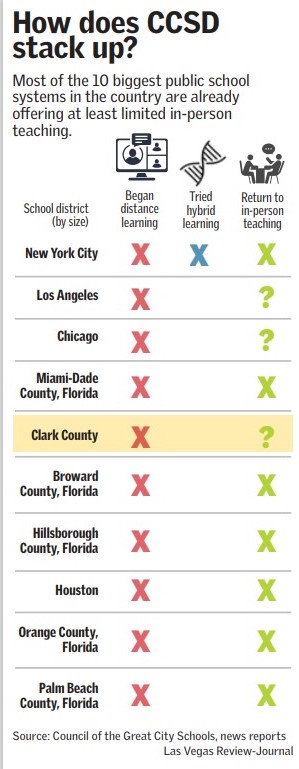
“Because of the extraordinary high level of COVID-19 in the Los Angeles area, it is no longer safe and appropriate to have any students on campus,” Superintendent Austin Beutner said in a news release last month. “We will also be asking those who are currently working at schools to work from home if at all possible for the rest of the semester.”
In a Dec. 21 video message — the most recent one available — Beutner said it won’t be possible to reopen school campuses by the time spring semester starts Jan. 11.
The district and the United Teachers Los Angeles union have reached an agreement on “enhancements to online instruction for students” for the next semester, Beutner said in a news release last month. That includes continuing current class assignments, an additional 30 minutes of office hours Tuesdays through Fridays, 20-30 minutes of additional live instruction for first through 12th grades on Mondays and increased employee training on social emotional learning.
The district and union agreed to a Jan. 24 deadline to complete a plan for offering hybrid instruction — a mix of in-person and remote instruction — when health conditions allow.
New York City Department of Education
The nation’s largest school district, with about 1.1 million students, opened under a hybrid model when a new school year began but also offered families a distance learning option.
New York City, a coronavirus hot spot early in the pandemic, was one of the only large districts in the nation to start the new school year with some in-person classes.
All schools temporarily closed Nov. 19 and students were transitioned to full distance learning after exceeding the benchmark seven-day rolling average test positivity rate of 3 percent.
Mayor Bill de Blasio and City Schools Chancellor Richard Carranza announced a plan Nov. 29 to reopen campuses for young students and those who have a disability, about 190,000 of the district’s students. Middle and high schoolers are continuing with distance education.
The plan called for students in preschool through fifth grades who had already opted for in-person learning earlier this school year to return Dec. 7. Students in all grade levels who have disabilities and attend District 75 schools were allowed to return to in-person Dec. 10.
Each school conducts random testing weekly for 20 percent of people on campus, according to a late November news release from the mayor’s office. And schools are continuing to work toward being able to offer five days a week of in-person classes.
The news release also included the most recent test positivity rate in schools at the time — 0.28 percent. As of Dec. 29, the district has seen 6,867 confirmed coronavirus cases — 2,999 among students and 3,868 among employees — since mid-September.
Chicago Public Schools
The nation’s third-largest school district, with about 340,000 students, operated with distance learning in the fall.
“Under this model, all instruction will happen with students attending classes from home, with the exceptions given to diverse learning students with IEPs and other specialized learning needs,” according to the school district’s website.
The district is planning for a phased reopening after winter break, with the option for families to send their students in preschool and “moderate and intensive cluster programs” back to classrooms in person Jan. 11 and children from kindergarten through eighth grades back Feb. 1, according to the district’s website.
High school students are slated to continue with remote instruction.
Salt Lake City School District
The district, which has about 24,000 students, operated with distance learning during the fall semester.
It will offer an in-person learning option for elementary school students, with a phased return starting the week of Jan. 25. And it announced last month it has a plan to bring back middle and high school students Feb. 8, subject to School Board approval Jan. 5.
In a Dec. 18 news release, Interim Superintendent Larry Madden said the district knows it can have COVID-19 vaccines for educators and “frontline school employees” by Jan. 8 and 9. The second dose of the vaccine will be administered Jan. 29 and 30.
Omaha Public Schools
This Nebraska district, which has more than 53,000 students, started its school year with distance learning but transitioned in October to a “Family 3/2” plan — a hybrid model with two cohorts alternating which days they attend in-person classes. Families in Omaha, which has nearly 480,000 residents, also have the option of full-time distance learning.
Students are in cohorts based on the first initial of their last name.
Some students in specialized programs, such as for those who have special needs, attend in person five days a week.
The second semester will start initially with distance learning, but students will return in phases this month to the same format for classes as the fall semester.
A weekly summary of COVID-19 cases for Dec. 11 — the latest information available from the school district — shows 66 new diagnosed cases among staff, 86 current active cases and 287 who are isolated or in quarantine. Among students, there were 89 new diagnosed cases, 141 active cases and 1,294 in isolation or quarantine.
Contact Julie Wootton-Greener at jgreener@reviewjournal.com or 702-387-2921. Follow @julieswootton on Twitter. The Associated Press contributed to this report.



